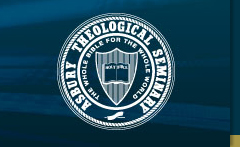Files
Download Full Text (68 KB)
Summary
Textbooks (1) The Bible The primary text is the Bible. As a part of your work, feel free to draw on the Revised Standard Version (RSV), the New American Standard Bible (NASB), the New International Version (NIV), the New Jerusalem Bible (NJB), and the New American Bible (NAB). There are several versions which are not suitable as the primary texts for this class. For example, translations that are done by a single translator (e.g., The Message), or translations which are simply paraphrases built from an English text (e.g., The Living Bible [not to be confused with the New Living Translation]). However, as we will discuss throughout the course, utilizing a variety of translations is of utmost importance. This is especially true if you do not know Greek, but that is not true with those of you who have signed up for this class. Ideally, it would be best if your copy of the Bible was not overly interpretive (i.e., with extended notes, paragraph headings, etc., etc.). Still, most Bibles these days come with "user-friendly" helps and so all I ask is that you wait on consulting these notes until AFTER your own inductive work! Note: In my personal study, I like a Bible with margins large enough to make notes on things I observe. You may want to start this class with a new bible in which you can study Matthew afresh. (2) David L. Thompson, Bible Study That Works (Hereafter: BSTW) Revised edition. (Nappanee, IN: Evangel Press, 1994). (3) Joel B. Green et al., eds, Dictionary of Jesus and the Gospels (Hereafter: DJG) Downers Grove, IL: IVP (1992).
Publication Date
January 2004
Publisher
Asbury Theological Seminary
Keywords
ExL, Study, Inductive, IBS, Spring, Bible, NT510
Language
English

